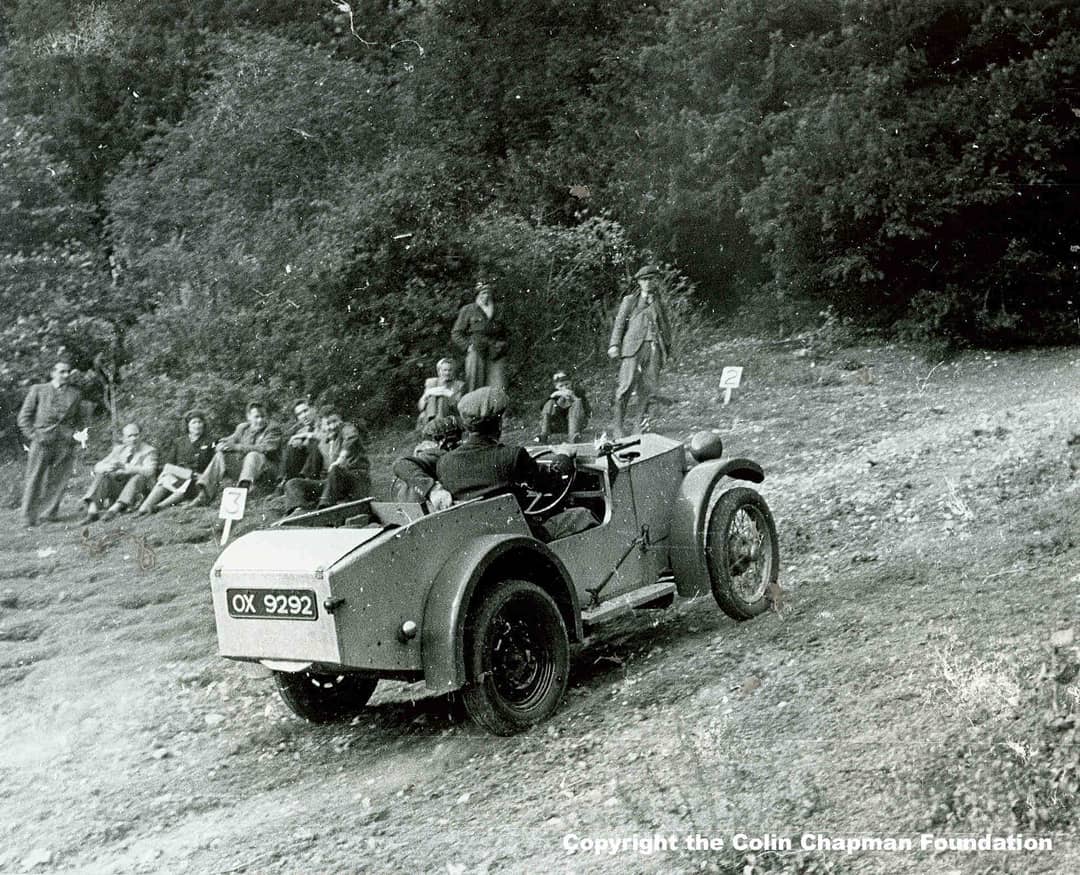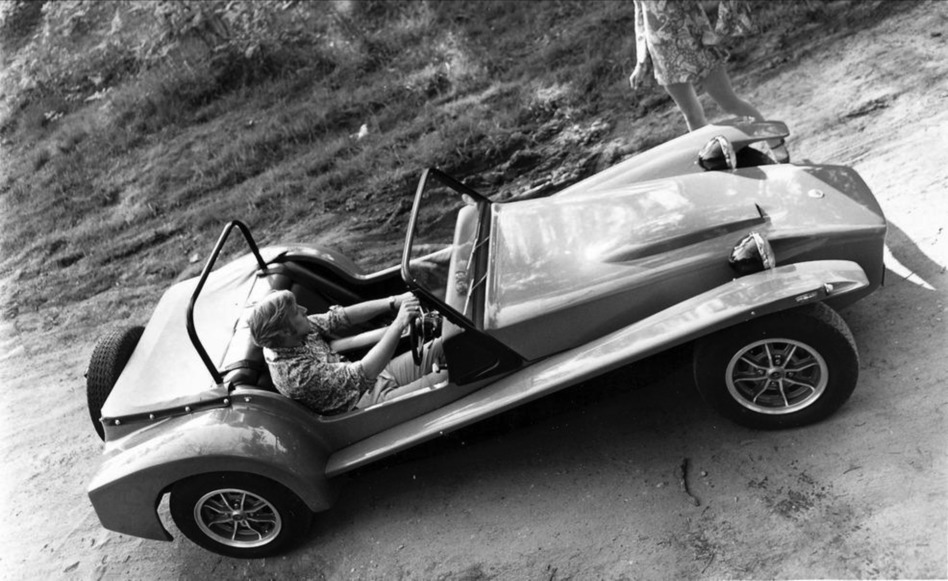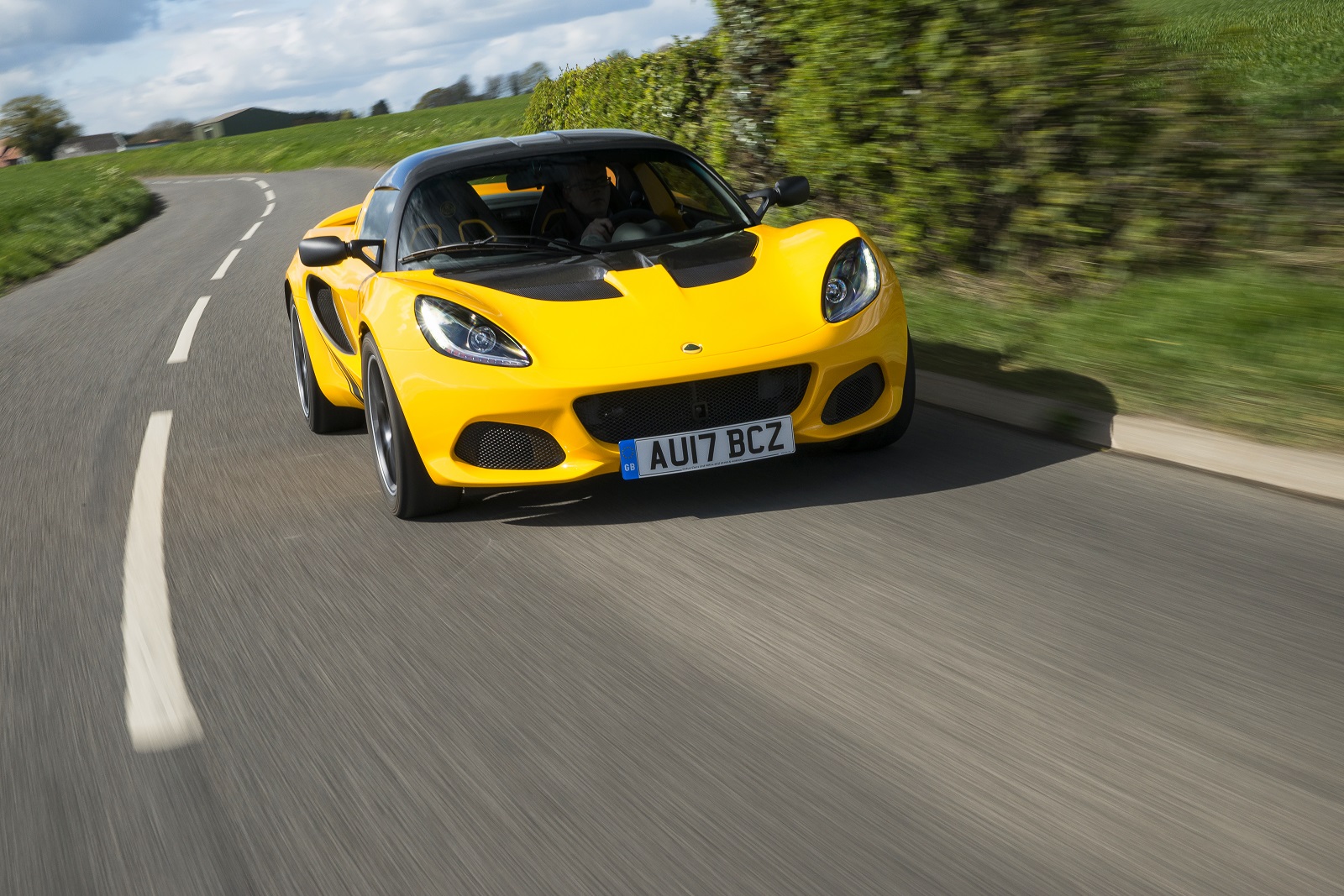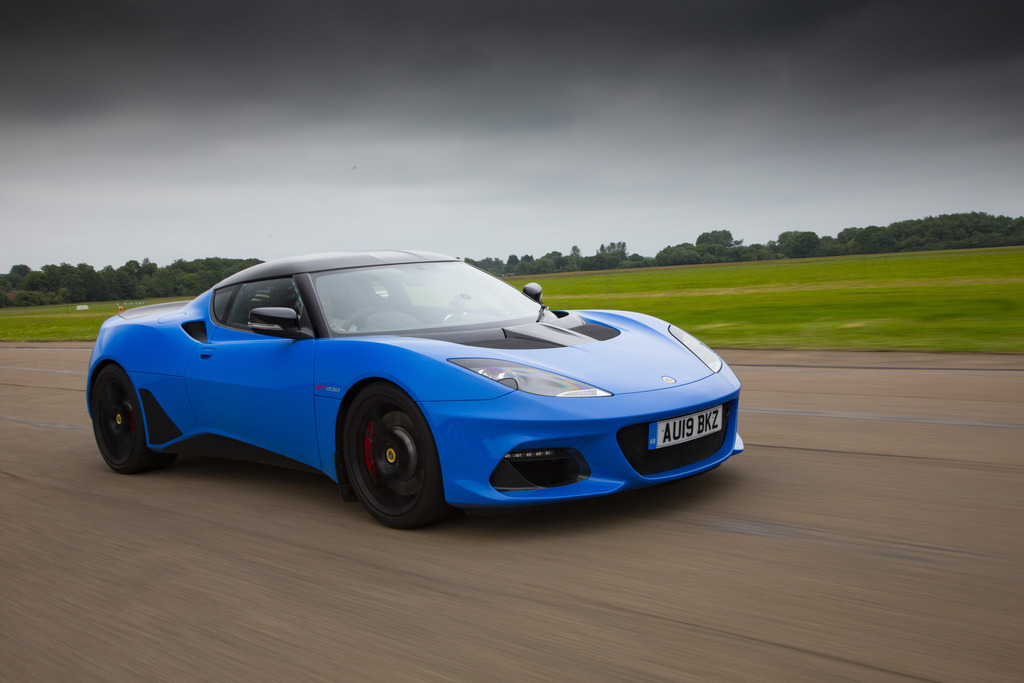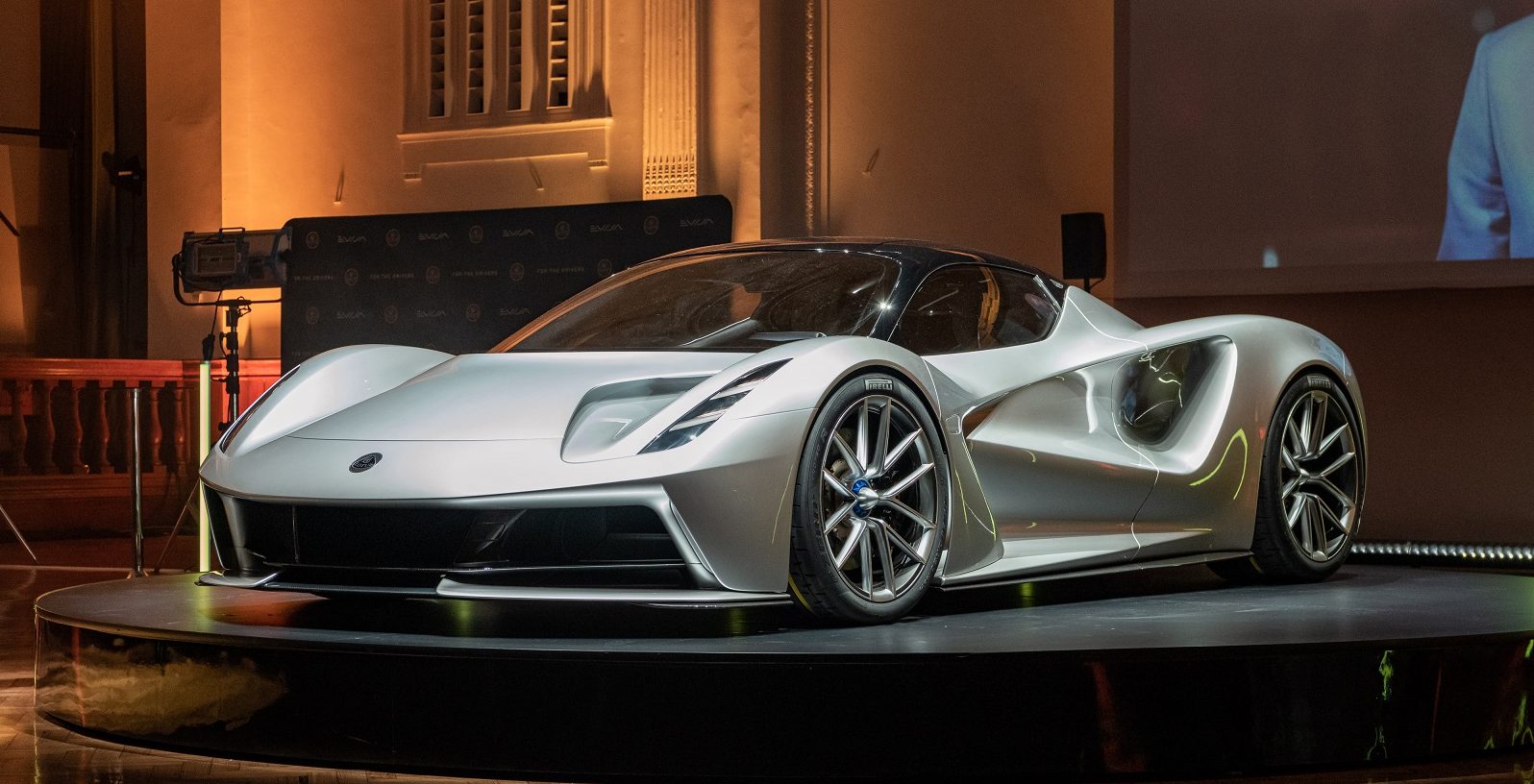It’s one of the most recognised names in sports and racing cars. Throughout its over seventy year history, the brand stayed true to its roots. Now a part of the Geely family, Lotus looks ahead to the next seventy years.
The first Lotus was Chapman’s own modified Austin Seven. With the help of his then-girlfriend Hazel, Chapman rebuilt the 20-year old car to enter it into competition trials in 1948. Despite the very modest 15hp output, Chapman managed some success with the car – enough to build a second, the Lotus MkII.
By the time the Lotus Engineering Company came into existence in 1952, Lotus had already built and successfully competed with its MkIII in the 750 Formula. This saw Chapman and his friend Michael Allen build what would be the first production Lotus car, the MkVI.
Racing was always a core activity for Chapman and Lotus. By 1955, Lotus was competing in the 24 Hours of Le Mans, capturing class honours and an “Index of Performance” title in 1957, by setting an average race speed 30% faster than the category target.
Lotus became a more globally recognised brand the following year as it entered Formula One. The Lotus 12 and Lotus 16 were not particularly successful, but by 1960 Lotus was taking race victories. These came via its first mid-engined car, the Lotus 18, in the hands of Stirling Moss.
By 1963, Lotus was a world champion. Driving a Lotus 25, Jim Clark took seven race wins in the season, resulting in both driver and constructor titles heading to Lotus. Despite three wins in 1964, Lotus missed out on both titles, but Clark won six of 1965’s ten races to repeat the double-championship. Clark also became the first driver to win the Indianapolis 500 in a mid-engined car, with the Lotus 38 the same year.
Lotus would win a further five constructor and four driver championships, with Graham Hill, Jochen Rindt, Emerson Fittipaldi and Mario Andretti. It also became the first constructor to win 50 grand prix race wins.
Of course Lotus is as well-known for its road cars as its racing models. Following Chapman’s engineering principles of “simplify, then add lightness”, Lotus became known for its light, innovative cars for enthusiasts.
The first MkVI evolved into the famous MkVII. Better known as the Seven, or 7, Lotus built over 2,000 examples across four generations spanning 15 years. The Lotus Seven was already popular, in part due to the fact customers saved on purchase tax thanks to the kit-car nature, by the time it became cemented in popular culture as Patrick McGoohan’s “Prisoner” drove a series 2 car in the television show’s opening title sequence. The car remains in production today, after Lotus sold the rights to a major dealer in the UK, Caterham Cars, in 1973.
The company moved to Cheshunt, having outgrown its Railway Hotel premises in Hornsey, to build its first true production car. The Lotus 14 – or “Elite” – featured a revolutionary full fibreglass monocoque and a first application of the eponymous rear suspension design known as “Chapman Struts”. It proved awkward to manufacture, so for the next road car Chapman opted for a fibreglass body mounted to a steel backbone chassis. This was Lotus’s second iconic road car: the Elan.
Despite weighing less than 700kg, the two-seat convertible Elan came with four-wheel disc brakes, four-wheel independent suspension and rack and pinion steering. The lower cost of construction made the Elan more of a commercial success than any previous Lotus. It remained in production through to 1973, over four versions, and Lotus even developed a stretched version of the coupe with small rear seats.
At around the same time Lotus was preparing to launch the Elan, Ford approached Chapman about its engine. The 1.5-litre unit started life as a Ford Kent which Lotus bored and converted to a twin cam. Ford was interested in the engine in order to homologate the Cortina for Group 2 racing. Ford supplied Cortina bodies to Lotus, who fitted the engine, gearbox and new rear suspension, creating the Lotus Cortina.
Another converted saloon car gave Lotus another highly recognisable model – the Lotus Carlton/Omega. This started life as an ordinary executive saloon which, with Lotus-modified suspension and a 377hp twin-turbo engine, rivalled contemporary supercars.
Lotus itself was no stranger to supercars though. From its new permanent home at Hethel, near Norwich, it launched the Esprit in 1976, which featured a familiar fibreglass body – designed by Giorgetto Giugiaro – on a steel chassis. Like other Lotus cars, the 140mph Esprit was innovative and light, featuring inboard rear brakes and weighing just 900kg. The Esprit went on to be Lotus’s most enduring nameplate, with 10,000 cars made over a 28-year period. It even became James Bond’s official car, during Roger Moore’s stint as the British secret agent, starring as the submersible “Wet Nellie”.
The most successful car though has been the Elise. Almost half of Lotus’s entire life time production has been the Elise, introduced in 1998. The Elise uses Lotus staples of a fibreglass body on top of a metal chassis, but the modern car uses a bonded aluminium chassis rather than steel. Like classic Lotus models of old, the first Elise used a low power engine (a 118hp Rover K Series) to great effect due to the car’s light weight – although more powerful versions, producing up to 250hp in more recent cars, made it a devastating track car.
As Lotus passed its 70th anniversary just last year, it also produced its 100,000th car. The hand built Evora GT410 Sport is a tribute to the brand’s first world champion, Jim Clark, 50 years after his death. Hazel Chapman, Colin’s widow and the first investor in Lotus, personally approved the car.
Now a part of the fast growing Geely family, Lotus will be able to continue producing cars with its unique ethos for many more years to come.



